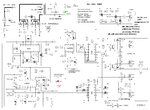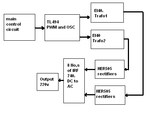liteon
Full Member level 2

Please look at the attachment and suggest the better way to modify the schematics of the inverter for more power.The inverter schematics is for 12v to 220v 200 watt inverter with ferrite core transformer.
I need to modify it to go for 500 watts.
how can i do it? two more trafos. more mosfets at the output. What would be ideal way to connect more trafos and mosfets.
Where should i make the changes in the supporting circuitry to adjust it for 500 watts.
Please i need it urgent.
I need to modify it to go for 500 watts.
how can i do it? two more trafos. more mosfets at the output. What would be ideal way to connect more trafos and mosfets.
Where should i make the changes in the supporting circuitry to adjust it for 500 watts.
Please i need it urgent.




